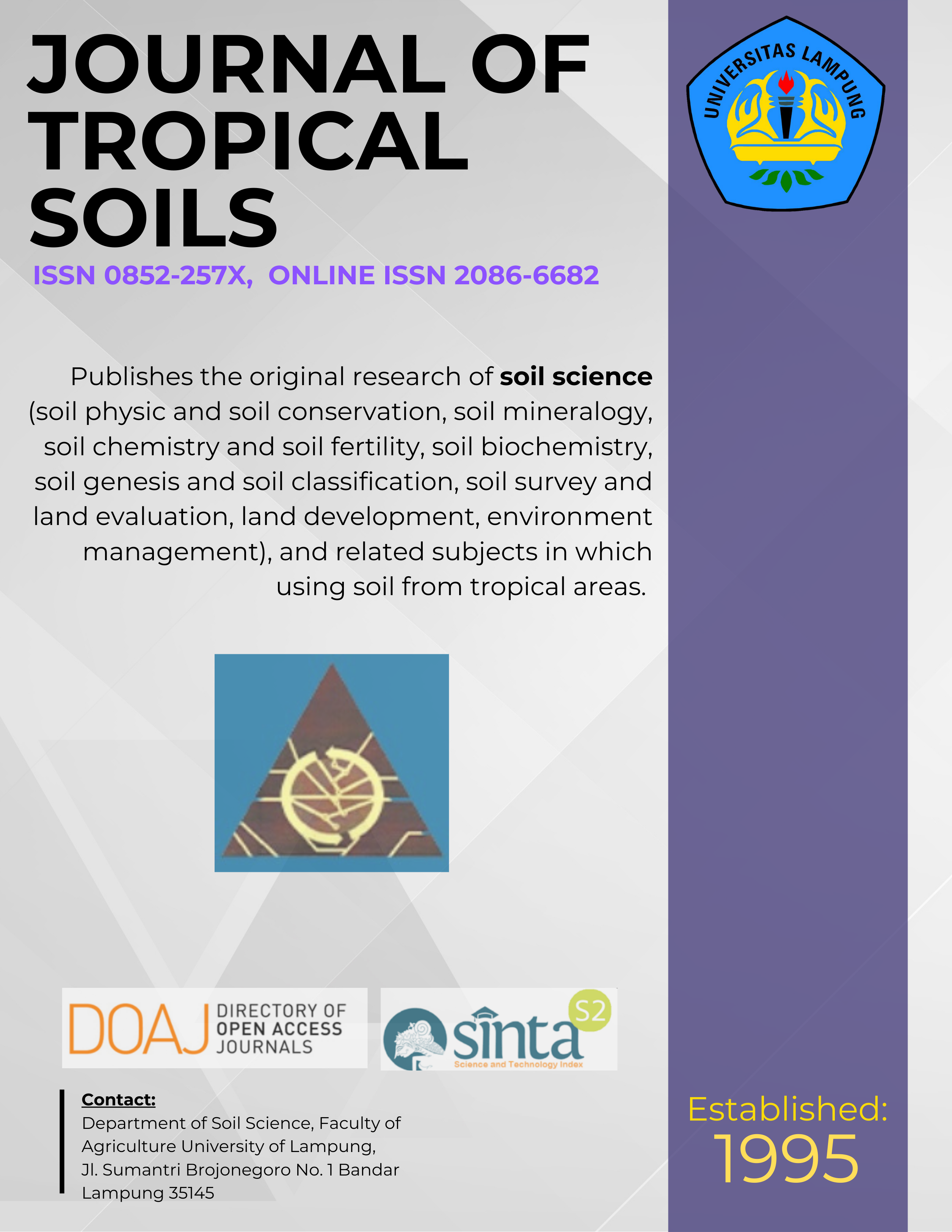The Effectiveness of Ameliorant to Increase Carbon Stock of Oilpalm and Rubber Plantation on Peatland
Main Article Content
Abstract
Application of peatland amelioration can improve soil quality, reduce GHG emissions, and increase carbon sequestration. The research aimed to study the effect of peatland amelioration on oil palm and rubber carbon stock improvement. Research was conducted from August 2013 until June 2014. The researches on oil palm were done in Arang-arang Village, Kumpeh Subdistrict, Muaro Jambi District, and in Lubuk Ogong Village, Bandar Seikijang Sub-district, Pelalawan District. Both sites are in Jambi and Riau Province. The research on rubber was done in Jabiren Village, Jabiren Raya Subdistrict, Pulang Pisau District, Central Kalimantan Province. The study used a Randomized Completely Block Design (RCBD), in four treatments and four replications. The treatments were pugam (peat fertilizer enriched by polyvalent cation), manure; empty fruit bunch compost, and control (no application). The measurement of C stock was performed 10 months after application using nondestructive methods. The results showed that peatland amelioration treatments had no significant effect to improve C stock on oil palm in 6 years old and 7 years old of rubber. After 10 months of amelioration application, the treatments increased C - stock of oil palm and rubber were 2.1-2.4 Mg ha-1 and 5-11 Mg ha-1, respectively. Longer time observation may be needed to study the effect of ameliorant on C-stock of annual crops.
Downloads
Download data is not yet available.
Article Details
Issue
Section
Articles
License for Authors
Authors who publish with this journal agree to the following terms:
- Authors retain copyright and grant the journal right of first publication with the work simultaneously licensed under a Creative Commons Attribution License that allows others to share the work with an acknowledgement of the work's authorship and initial publication in this journal.
- Authors are able to enter into separate, additional contractual arrangements for the non-exclusive distribution of the journal's published version of the work (e.g., post it to an institutional repository or publish it in a book), with an acknowledgement of its initial publication in this journal.
- Authors are permitted and encouraged to post their work online (e.g., in institutional repositories or on their website) prior to and during the submission process, as it can lead to productive exchanges, as well as earlier and greater citation of published work (See The Effect of Open Access).
License for Regular Users
Other regular users who want to cite, distribute, remix, tweak, and build upon author’s works, even for commercial purposes, should acknowledge the work’s authorship and initial publication in this journal, licensed under a Creative Commons Attribution License.
How to Cite
The Effectiveness of Ameliorant to Increase Carbon Stock of Oilpalm and Rubber Plantation on Peatland. (2016). JOURNAL OF TROPICAL SOILS, 20(2), 67-75. https://doi.org/10.5400/jts.2015.v20i2.67-75

